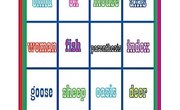Understanding and recognizing differences between independent and dependent clauses is a crucial component to English grammar and sentence structure. To form grammatically correct sentences for essays or academic projects, you sometimes need to combine dependent and independent clauses to avoid choppy ideas. Other times, you need to use commas or semicolons between clauses for succinct writing. Learning the differences will help make you a stronger writer.
Dependent Clauses
A dependent clause cannot stand alone as a sentence. Although it contains a group of words that includes a subject and verb, it depends on an independent clause to function. The best way to identify a dependent clause is to ask yourself if the clause expresses a complete thought. If it does not, the clause is dependent. For example, "When I was running" only contains a partial idea. Look for other dependent marker words at the fronts of sentences to identify them, such as "when," "because" and "although."
Independent Clauses
An independent clause is a complete thought that contains a subject and verb, and expresses an entire idea. Independent clauses do not depend on other clauses to function and thus stand alone in sentences. For example, "I decided to go for a morning jog along the beach." Independent marker words that appear at the beginning of sentences help you identify independent clauses, such as "therefore," "however" and "consequently."
Combining Clauses
Vary your writing by combining independent and dependent clauses. If you combine an independent and dependent clause, insert a comma between them: "After I lifted weights, I did laps at the pool." If you combine two independent clauses, follow basic punctuation rules for sentences. The easiest way to combine clauses is with the coordinating conjunctions, "for," "and," "nor," "but," "or," "yet" and "so."
Errors and Clauses
Sometimes students create comma splices and run-on sentences when combining clauses. A comma splice occurs when you join two independent clauses with a comma. For instance, " I wanted to run on the Santa Monica pier, it was too crowded" is a comma splice. In this case, insert a coordinating conjunction after the comma: "I wanted to run on the Santa Monica pier, but it was too crowded." Avoid run-on sentences by punctuating clauses: "I ordered a hamburger and I added mustard and relish." Insert a comma before "and" to fix the error.
Related Articles
References
Resources
- "The Elements of Style"; William Strunk, et al.; 2000
Writer Bio
Texas-based Elaine Harper has been writing since 2011. She has reviewed books for "The Concho River Review." As a university instructor, she has experience teaching students how to write and conduct research for various situations. She holds a Master of Arts in English from Angelo State University.










